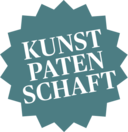Sattel: Sattel
1695-1703, Besitzer: Sultan Mustafa II. Sohn Mehmeds IV.
Sattel
The seat of this saddle is upholstered in cherry-red velvet embroidered with an all-over floral pattern executed in silver and gold thread and leather appliqué. Pommel and cantle are decorated with ornaments made of fluted, partially gilt sheet silver.
In the nineteenth century, the saddle was believed to have belonged to Kara Mustapha, the Ottoman general who led the second siege of Vienna in 1683. Legend has it that the saddle was one of the objects placed at the emperor’s feet after the liberation of the city. There are, however, no archival sources to support this. Much later, in the 1980s, the saddle was attributed to Murad Geray. He was Khan of the Crimean Tartars from 1678 to 1683, and the owner’s mark struck on the back saddle steel was ascribed to him. The Crimean Tartars were Ottoman vassals and fought in the Sultan’s army against the Habsburg Empire, as well as in many other wars. In 1683, Murad Geray led a division of Tartars during the Siege of Vienna.
This owner’s mark, however, is not Murad Geray’s but the tughra of Sultan Mustapha II, who ruled from 1695 to 1703. In 1697, he led a campaign against the Habsburg Empire that ended in a catastrophe: in the decisive Battle of Zenta, fought on 11 September 1697, Prince Eugene of Savoy vanquished the Ottoman army.
This saddle may have entered the imperial collection as part of the spoils brought back from the Battle of Zenta. Among the objects captured by victorious Habsburg troops was the Seal of the Empire that Grand Vizier Elmas Mehmed Pasha had brought with him on this campaign (now in the Heeresgeschichtliches Museum, Vienna).
Objektdaten
Objektbezeichnung
Sattel
Kultur
Türkisch (osmanisch)
Datierung
1695-1703
Besitzer
Vormals zugeschrieben an
Murad Geray , Khan der Krimtartaren (1627-1696, regierte 1678-1683)
Kara Mustafa Pascha (osmanischer Großwesir, um 1635/36 - 1683)
Material/Technik
Holz. Leder. Lederappliken. Textil: Samt, Seidenfäden, Silberlahn, Goldlahn. Beschläge von Vorder- und Hintersteg, Rosetten: Silberblech, getrieben, teils feuervergoldet. Schnallen: Eisen.
Maße
H 65 cm, B 56 cm, T 46 cm
mit Sattelbock: H 95 cm
Stempel / Zeichen
Stempel mit arabischer Inschrift (sog. Tughra) Sultan Mustafas II. (reg. 1695-1703)
Bildrecht
Kunsthistorisches Museum Wien, Hofjagd- und Rüstkammer
Inv. Nr.
Hofjagd- und Rüstkammer, C 153
Permalink (zitierbarer Link) zu dieser Seite: www.khm.at/de/object/373686/
Kunst & Patenschaft
Viele unserer Objekte sind auf der Suche nach Paten. Mit einer Kunstpatenschaft tragen Sie dazu bei, die Schätze der Kunstgeschichte für die Zukunft zu bewahren.
Als Kunstpate fördern Sie mit Ihrer Spende direkt und nachhaltig die wissenschaftliche Dokumentation, Erforschung, Restaurierung und Präsentation der Kunstbestände des Kunsthistorischen Museums Wien.

